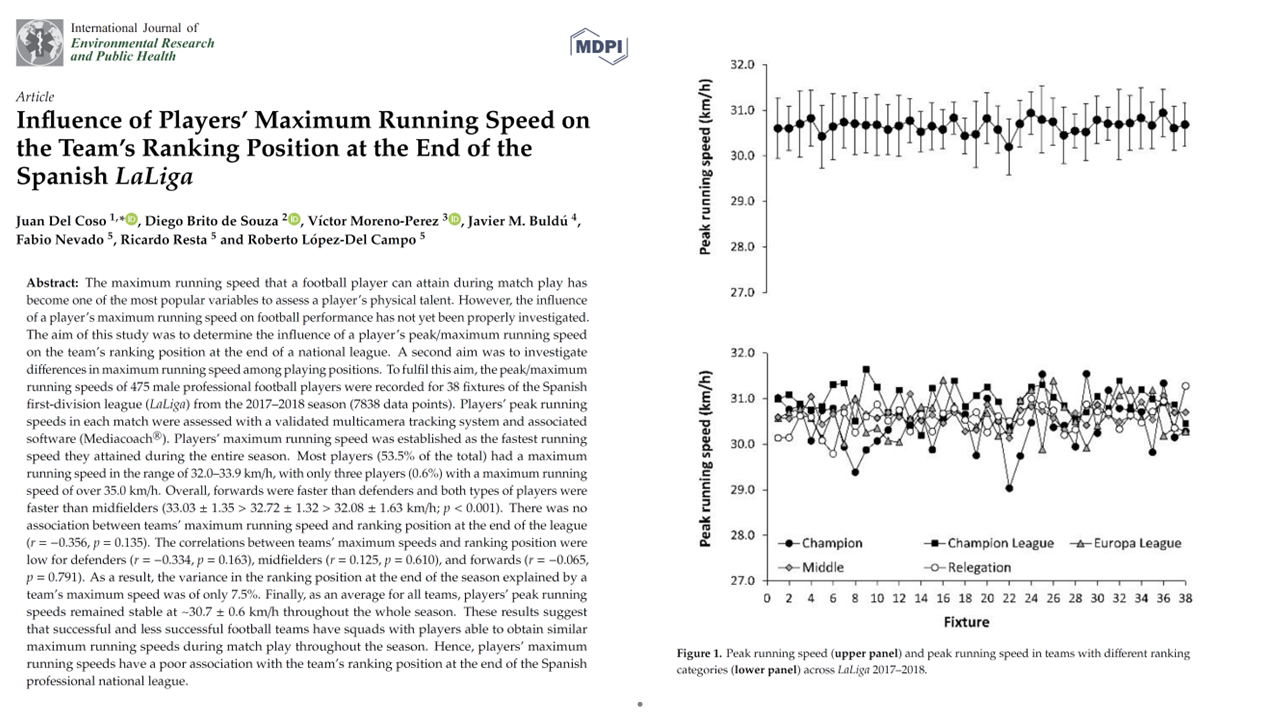
27 Nov Influence of Players’ Maximum Running Speed on the Team’s Ranking Position at the End of the Spanish LaLiga
Practical Summary for Coaches and Analysts
Speed is one of the most eye-catching qualities in football. Scouts, coaches, and fans often highlight the “fastest player on the pitch” as a potential game-changer. But does having faster players actually decide whether a team finishes high in the league table?
This study analyzed the maximum running speed of 475 LaLiga players across an entire season (2017/18). Using Mediacoach® tracking, researchers measured the top sprint achieved by each player, then compared those speeds with the final league standings.
What the data revealed
- Most players sprint between 32–34 km/h. Only 3 players exceeded 35 km/h in the entire season.
- Forwards are the fastest. On average, forwards reached ~33.0 km/h, ahead of defenders (~32.7 km/h) and midfielders (~32.1 km/h).
- Speed is stable. Peak speeds stayed consistent from the first matchday through the last — players were capable of hitting top gear immediately, without needing months of competition.
- Ranking is not determined by speed. There was almost no correlation between the team’s fastest sprinter and its league position. Maximum speed explained just 7.5% of the final ranking variance.
What this means for your training and match planning
The results highlight an important reality: raw maximum speed is not a predictor of team success. Nearly every professional team in LaLiga has players capable of surpassing 30 km/h, which reduces speed’s ability to separate “good” from “great” teams.
Instead, what matters more is:
- Repeated sprint ability: being able to perform dozens of high-intensity runs in short succession.
- Acceleration and deceleration capacity: since most decisive actions occur in short spaces rather than long sprints.
- Contextual use of speed: timing runs, exploiting defensive gaps, and applying sprinting actions in decisive moments (counterattacks, pressing, goal situations).
For coaches, this means dedicating training time to sprint repetition under fatigue, position-specific acceleration drills, and tactical integration of speed is more impactful than simply chasing higher maximum velocity.


